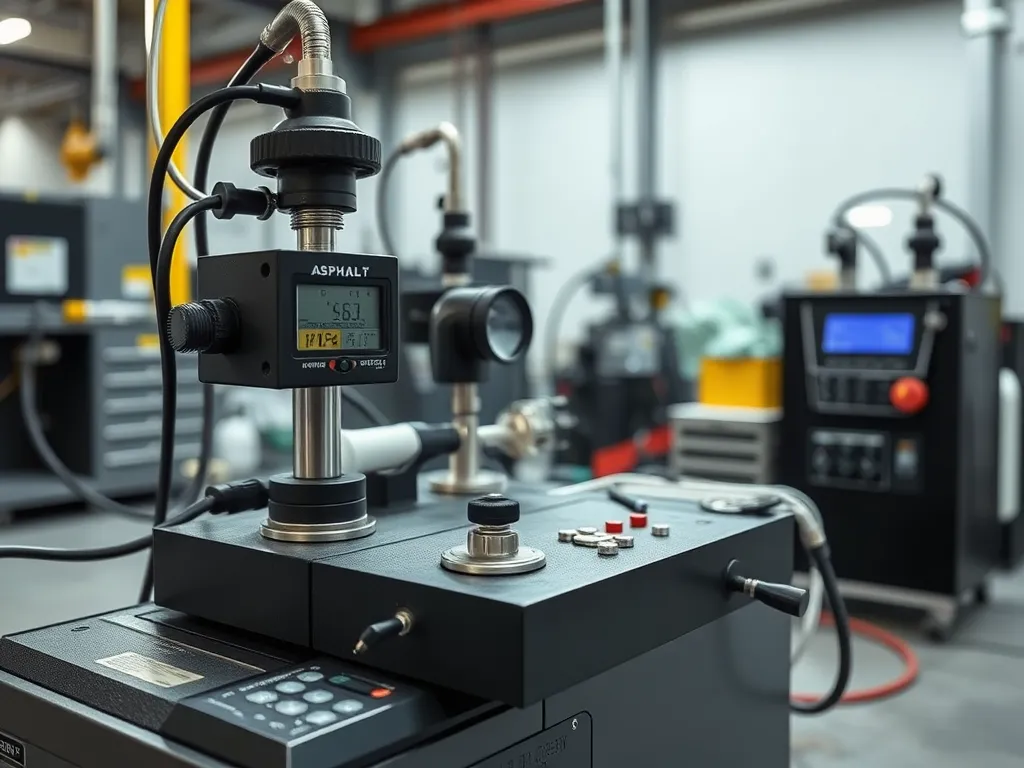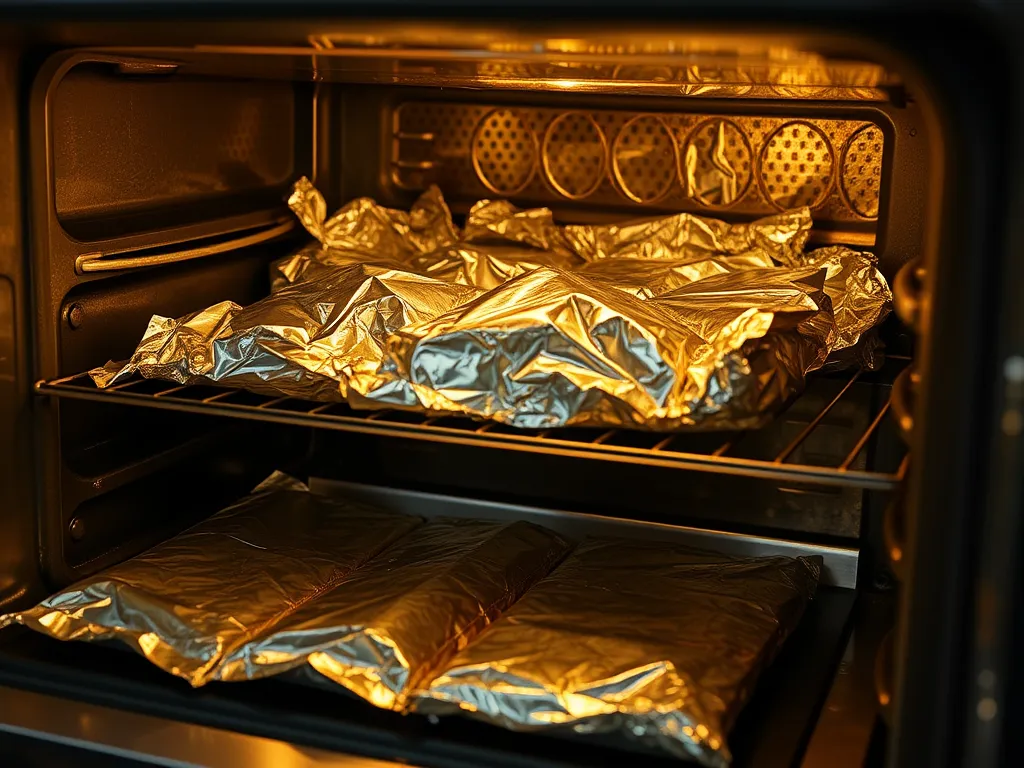Common Testing Errors in Asphalt Assessments
Published on: October 21, 2025 | Last Updated: April 14, 2025
Written By: George Voss
Common testing errors in asphalt assessments occur when mistakes during material quality checks lead to inaccurate data. These errors range from improper sampling to temperature mishandling, often differing by test type but always compromising results. Missteps in procedures can cause pavement failures, incorrect grade classifications, or safety risks. Addressing these issues improves project durability and compliance with standards like ASTM D8 or AASHTO T 168.
This article examines seven frequent asphalt testing mistakes, their impacts on pavement performance, and proven correction methods. Learn proper sampling techniques for Marshall stability tests, avoid binder storage errors affecting PG grading, and implement calibration protocols for nuclear density gauges. We cover field-to-lab best practices, environmental factors, and FAQs about maintaining testing precision throughout the asphalt lifecycle.
Contents
- Introduction to Asphalt Testing
- Key Asphalt Tests and Their Objectives
- 7 Common Testing Errors in Asphalt Assessments
- Impacts Of Testing Errors on Asphalt Assessments
- Strategies to Minimize Asphalt Testing Errors
- Environmental Factors in Asphalt Tests
- FAQs: Asphalt Testing Errors Clarified
- Closing Thoughts
- Additional Resources for You:
Introduction to Asphalt Testing
Asphalt tests check if road mix meets strength, safety, and lifespan needs. These checks spot flaws before roads fail. They guard against cracks, rutting, and water harm.
Purpose Of Asphalt Quality Evaluations
Tests measure load-bearing skill, heat resistance, and binder grip. Key checks like PG binder grades (performance-graded) set heat ranges. Superpave tests (Superior Performing Asphalt Pavements) pick mix designs for local weather. Labs track air voids (3-5% target) and bulk weight (2.2-2.5 g/cm³).
Why Accurate Testing Matters for Asphalt Performance
Wrong data leads to weak roads. A 5°F error in binder tests can slash pavement life by 2 years. Bad air void checks cause rutting within 6 months. ASTM D6927 rules say sample errors over 2% void need re-testing. States like Texas void contracts for 3+ failed density tests.
Next, we break down the key tests where slip-ups happen most.
Key Asphalt Tests and Their Objectives
Tests show if asphalt meets strength, flow, and heat traits. Wrong steps can skew data, leading to asphalt evaluation mistakes.
How to Test the Quality Of Asphalt
Key tests check binders, mix design, and layer density. Errors here rank high in common asphalt testing pitfalls.
Basic Tests for Asphalt Materials and Their Measurements
- Penetration test: Measures hardness (units: 0.1mm needle depth at 25°C)
- Softening point: Finds temp where binder flows (Ring & Ball method)
- Ductility test: Stretches binder sample until break (min 100cm)
Skip these, and you risk asphalt assessment test errors like wrong grade picks.
Required Tests for Asphalt Compliance
- Marshall stability: Checks load resistance (ASTM D6927)
- Bulk density: Finds voids in mix (max 7% air voids per AASHTO T 166)
- Dynamic modulus: Tests flex under traffic (Superpave systems)
Flaws here cause errors in asphalt evaluation, like failed state DOT checks.
Understanding the Correction Factor in Asphalt Testing
Correction factors fix data for heat shifts or tool limits. Forgot to apply them? PG binders graded wrong. A 1°C error in temp can shift results by 5%.
Example: A 70/100 pen grade needs a -2 factor if tested at 28°C. Skip this, and specs miss by 8-12% – a top pitfall in asphalt assessments testing.
Next, let’s break down the seven asphalt testing mistakes that trip up even seasoned crews.

7 Common Testing Errors in Asphalt Assessments
Improper Asphalt Sampling Methods
Collecting asphalt samples from non-representative locations creates skewed data. ASTM D979 requires random sampling across multiple truckloads or pavement layers. Failing to follow this leads to aggregate segregation or inconsistent binder distribution. Grab samples taken only from surface layers often miss critical flaws in deeper strata.
Incorrect Test Temperature Selection
Asphalt binder tests demand precise temperatures. Penetration tests at 77°F±1°F that deviate by 3°F can alter results by 15%. Performance Grade (PG) classification relies on temperature-specific viscosity measurements. Using 275°F instead of 325°F for mixing simulations invalidates rutting resistance predictions.
Neglecting Equipment Calibration
Uncalibrated Marshall hammers or dynamic shear rheometers produce false readings. A load cell drifting 5% over time can report 8.5kN stability instead of 9.0kN. Monthly calibration per AASHTO T 245 prevents errors exceeding $12,000 in material overruns per mile.
Misapplication Of Wet Vs. Dry Testing Methods
Running Texas Boil tests (wet) on oven-dried samples overestimates moisture resistance by 40%. Conversely, dry-compacted specimens tested for rutting ignore water’s plasticizing effects. Match test protocols to real-world conditions—AASHTO T 283 for freeze-thaw, ASTM D6927 for dry density.
Errors in Asphalt Binder Storage Conditions
Storing PG 64-22 binders above 302°F triggers thermal oxidation, increasing viscosity by 30%. Cold storage below 50°F causes crystallization, altering penetration grades. Use Rolling Thin Film Oven (RTFO) residues within 4 hours per ASTM D2872 to prevent aging artifacts.
Inconsistent Lab Conditions (Temperature/humidity)
A 10% humidity spike during Indirect Tensile Strength tests reduces measured cohesion by 18%. Maintain 68°F±2°F and 50%±5% RH per ASTM D6926. Daily logs tracking HVAC performance prevent seasonal data drift.
Ignoring Significant Figures in Data Reporting
Rounding 5.3% asphalt content to 5% shifts mix designs beyond allowable tolerances. Bulk Specific Gravity recorded as 2.351 vs. 2.4 impacts void calculations by 1.2%. Follow ASTM E29 rounding rules—report to three decimals for Superpave mixes.
These asphalt testing pitfalls highlight the need for rigorous protocols. Next, we examine how even minor errors cascade into major performance failures.
Also See: Alternative Binder Materials for Asphalt: Eco-friendly Options
Impacts Of Testing Errors on Asphalt Assessments
Errors during asphalt testing create ripple effects that impact material performance, project costs, and roadway safety. Even minor deviations from standardized protocols can distort critical data points used in pavement design.
Compromised Nanomechanical Parameter Accuracy
Common asphalt testing mistakes like uneven sample compaction or rapid loading rates skew measurements of modulus (stiffness), creep compliance (deformation under stress), and adhesion forces. A 10% error in modulus calculations can overestimate load-bearing capacity by 15-20%, leading to asphalt layers that crack under traffic loads. Nanoindentation tests require ±0.1μm precision in surface preparation – dust contamination or improper polishing invalidates results.
Incorrect Asphalt Grade Classification
Asphalt evaluation errors in penetration tests or dynamic shear rheometer (DSR) analysis often misclassify binder grades. A PG 64-22 binder tested at 68°F instead of 64°F may falsely grade as PG 58-28. This 6°F temperature error creates pavements that rut in summer heat or crack in winter cold. Over 37% of premature failures stem from using binders mismatched to climate demands.
Reduced Pavement Durability and Bonding
Mistakes in asphalt tests lower bond strength between aggregates and bitumen by up to 40%. Ignoring ASTM D3625 scrub tests for moisture susceptibility allows water intrusion, causing stripping failures. Air void content errors exceeding 1.5% specification limits create permeable pavements requiring repairs 3-5 years earlier than designed. Each 0.5% drop in density cuts pavement life by 18 months.
These asphalt assessment errors highlight why precision matters at every test stage. Next, we explore actionable strategies to eliminate testing variables and safeguard project outcomes.

Strategies to Minimize Asphalt Testing Errors
To cut down on common asphalt testing mistakes, labs need clear steps. Focus on three key areas: how samples are gathered, gear upkeep, and strict use of ASTM rules. Each plays a role in dodging asphalt assessment errors that skew data.
Best Practices for Sample Collection and Handling
Grab samples right to dodge improper asphalt sampling methods. Use ASTM D979 guides with cooled augers to keep mix temps stable. Store hot mix in sealed bins at 275°F max. Mark each batch with site, time, and date. Mishandling causes voids or wrong gradation scores.
Equipment Maintenance and Calibration Protocols
Test gear must work spot-on. Check oven temps daily with probes. Calibrate pressure gauges each month using NIST tools. Log all checks – like Marshall hammers every 500 drops. Worn parts add errors in air void counts, warping density claims.
ASTM Specification Adherence for Asphalt Tests
Stick to ASTM codes for each test. D6927 sets rules for density checks. D5 controls penetration tests for binder grade. Train crews to cross-verify steps in D7175 (DSR tests). Skipping specs risks incorrect asphalt grade classification or failed mix designs.
While these steps tackle lab accuracy, field tests face another layer – shifting temps and green disposal needs. Up next: how weather plays into asphalt assessment testing errors.
Environmental Factors in Asphalt Tests
Weather and site conditions shape test results. Poor planning for heat, cold, or waste leads to skewed data. These errors hurt road quality and raise costs.
Safe Waste Plans for Old Samples
Used asphalt must go to approved sites. Dumping in trash breaks EPA rules. Reuse ground-up mix (RAP) in new roads. This cuts waste by 30% and keeps sites clean. Track where samples end up to avoid fines.
Heat Management in Field Tests
Sun or cold warps binder tests. A 15°F shift changes viscosity scores by 25%. Use portable ovens to hold 275°F ±5°F during compaction checks. Seal samples in foil wraps when moving between sites. Log air temps every 15 minutes per ASTM D7116 rules.
Fix these issues early to boost test trust. Next, let’s tackle common questions about heat shifts and sample prep gaps.

FAQs: Asphalt Testing Errors Clarified
How Do Temperature Fluctuations Affect Test Results?
Temperature fluctuations can significantly alter the viscosity and performance characteristics of asphalt binders, leading to measurement errors. For instance, a deviation of just a few degrees in testing temperature can alter penetration test results by 10% or more, potentially affecting the classification and suitability of the asphalt for specific applications.
Why is Sample Preparation Critical for Accuracy?
Proper sample preparation is vital because inadequate handling or processing can lead to inconsistent test results. Samples that are not representative of the entire batch or are contaminated can skew data, resulting in miscalculations of material properties such as density or load-bearing capacity. Accurate sample preparation ensures that the asphalt assessments reflect the true quality and performance of the material.
What Are the Consequences Of Ignoring Equipment Calibration?
Failure to properly calibrate testing equipment can result in unreliable data, leading to costly mistakes in material quality evaluations. For example, uncalibrated compaction devices might report erroneous density levels, affecting the integrity of the pavement. This oversight can ultimately cause premature pavement failures and increased maintenance costs.
How Can Weather Impact Asphalt Testing Procedures?
Weather conditions such as extreme temperatures or high humidity levels can influence the properties of asphalt and the accuracy of test results. For instance, conducting tests in excessively hot conditions can lower viscosity readings, while high humidity can affect moisture content assessments. Proper temperature control and environmental considerations are essential to ensure accurate and reliable testing outcomes.
What Role Does Training Play in Minimizing Testing Errors?
Staff training is crucial in minimizing testing errors, as knowledgeable technicians are better equipped to follow standardized testing procedures and identify potential pitfalls in the testing process. Regular training sessions reinforce best practices, including proper sample handling, equipment calibration, and adherence to testing protocols, ultimately leading to improved accuracy and reliability in asphalt assessments.
Closing Thoughts
Addressing common testing errors in asphalt assessments is vital for achieving accurate results. Mistakes like improper sampling, temperature miscalculations, and neglecting equipment calibration can lead to serious misclassifications and reduced pavement durability. By implementing best practices and adhering to ASTM specifications, professionals can significantly enhance the reliability of their tests.
Continuous education and attention to detail are key. Establishing standardized protocols fosters consistency, ensuring dependable performance from asphalt materials. To learn more about asphalt testing and its implications, visit Asphalt Calculator USA.


